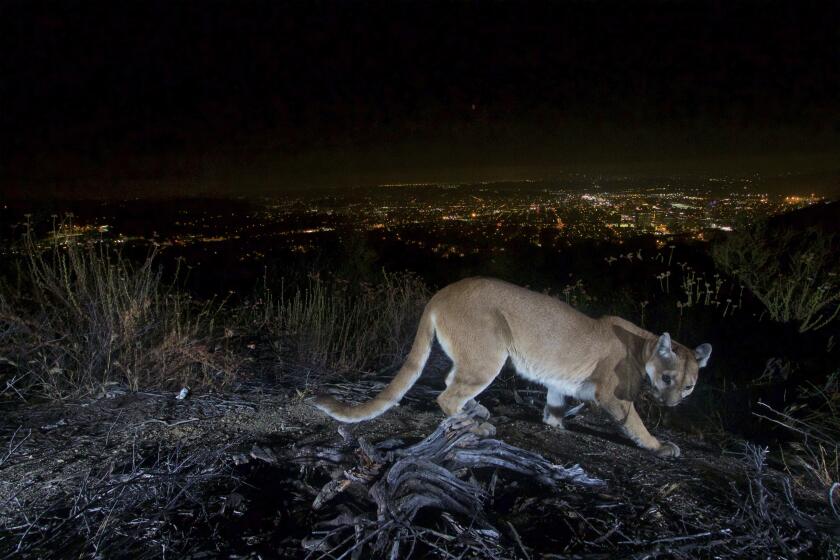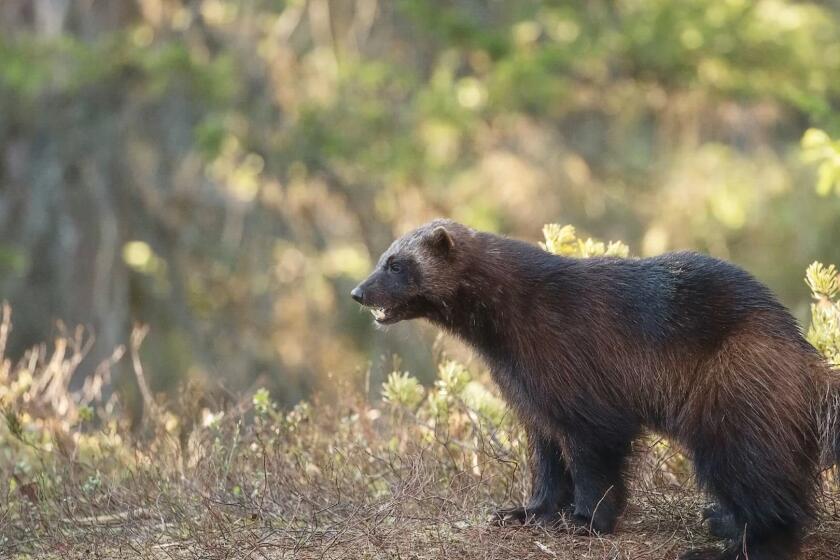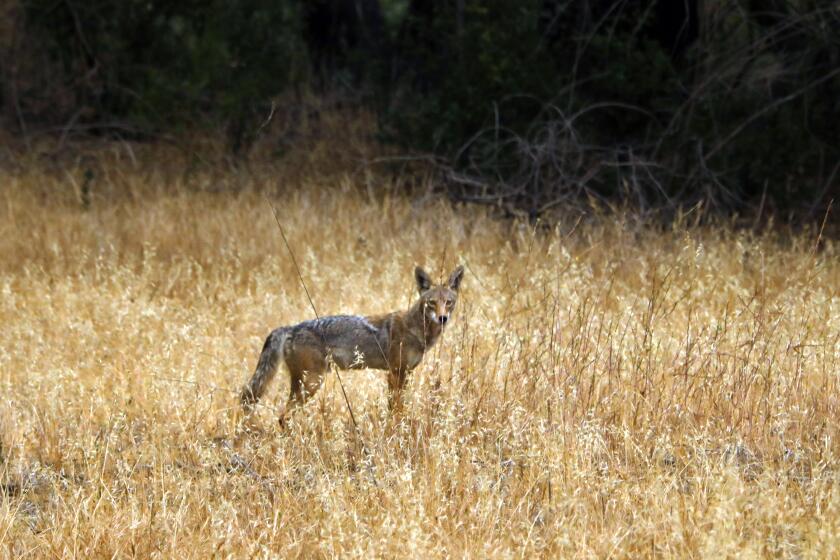Indians Want to Pluck U.S. Talons From Eagle-Related Rituals
It was seen as a showdown--the federal government’s need to protect bald eagles pitted against the right of American Indians to exercise their religion.
In the end, however, no definitive answers came out of the court case that began two years ago when a San Ildefonso Pueblo man shot a bald eagle for a religious ceremony.
As a result, many Indians contend, they essentially still have to rely on the federal government to be able to practice their religion.
Although federal laws prohibit killing bald eagles because the bird is a threatened species, the laws carve out exceptions for Indians to acquire eagle feathers and body parts for religious purposes.
Most often, Indians get permits to obtain feathers and body parts from a federal repository set up to take in carcasses from eagles electrocuted by power lines, hit by automobiles or killed illegally. Under special circumstances, Indians can get permits to kill eagles.
“What really bothers me is that we as Indian people have to have a law to allow us to practice our religion, yet this country was founded on religions and religious principles,” said Wallace Coffey, chairman of the Comanche Tribe based in Lawton, Okla.
To Indians, the eagle is holy, “the only bird that flies close to God,” he said.
“We still believe the eagle is a very powerful bird. Even just to see one gives us a blessing,” he said in a telephone interview from tribal headquarters. “But to be able to hold a bird in your hand, an eagle feather in your hand. . . . “
Robert P. Gonzales did not have a permit when he shot an eagle on San Ildefonso land on Feb. 7, 1995, for an upcoming pueblo ceremony. Although the Bureau of Indian Affairs verified the eagle was for religious purposes, Gonzales was charged with violating the Endangered Species Act, the Eagle Protection Act and the Migratory Birds Treaty Act.
U.S. District Judge James Parker dismissed the charges earlier this year without the case going to trial. He ruled that the U.S. Fish and Wildlife Service’s permit process violated Gonzales’ freedom of religion and ordered it changed.
Requiring Indians to name the religious ceremony at which an eagle will be used and requiring certification by a religious elder are not the best ways for the government to protect eagles, the judge ruled Jan. 31.
“Native Americans will still need to apply for an eagle permit, but they will not be required to provide” that information, he said.
The Justice Department is deciding whether to ask the U.S. 10th Circuit Court of Appeals in Denver to review Parker’s decision.
Assistant U.S. Atty. Jonathan Gerson of Albuquerque, one of the prosecutors, said courts all over the country have ruled that “conservation of these animals within the context of a permit system is not a violation of people’s free exercise of religion.”
The government argued during hearings on the case that the government has a compelling interest in protecting the bald eagle and that a less restrictive process would not work.
But Suzan Harjo, head of the Morning Star Institute in Washington, which deals with native cultural and traditional rights, applauded Parker’s decision.
“Basically, it says, stop prying, you needn’t delve into the details of this particular man’s religion,” said Harjo, a Cheyenne.
Alfonso Ortiz, a University of New Mexico anthropologist and San Juan Pueblo native, testified in a Dec. 4 hearing for Gonzales that the whole application process for eagle parts was unnecessary, invasive and intimidating to traditional pueblo leaders.
Ortiz, who died in late January, told the court that he was especially concerned by the requirement that the BIA approve the request.
“To have their spiritual practices be validated by federal government officials on a case-by-case basis is, I think, quite disagreeable, to choose a very mild term, to them, to the free exercise of their religious prerogatives.
“It’s a substantial burden because, as is most often the case, you have to explain yourself and account for yourself and your need for the eagle feathers, eagle parts, to someone who is not in a position to understand your spiritual life at all,” Ortiz said.
The National Eagle Repository near Denver, established in the 1970s to supply tribes with eagle parts, has been criticized for lengthy waits--now running about two years between the time feathers are sought and are sent--as well as the condition of birds when they arrive and complicated paperwork.
Coffey, as chairman of the Comanche tribe, is responsible for signing applications for members of his tribe. He said it is becoming a more common request as people turn back to native culture.
“Culture has no life expectancy,” Coffey said. “It’s not like a home or an automobile or a VCR. Culture goes on and on. We want to ensure our children are raised in that environment so future generations can be beneficiaries of what our ancestors handed down to us.”
The eagle now is listed as a threatened species, a step above the endangered listing it once had.
But U.S. Fish and Wildlife biologist John Lewis testified in the Gonzales case that “it is likely that the current bald eagle population would plummet if Native Americans were given unrestricted access to kill bald eagles for ceremonial use of eagle feathers.”
Harjo disagreed. She said Indians are a small population--less than 2 million people--and about two-thirds do not practice traditional religions.
“The federal government, in trying to increase the population of eagles, doesn’t go for the No. 1 cause of eagle deaths in America, which is lead-shot poisoning, because that would be too politically difficult,” she said.
“They don’t go for the second greatest cause, which is electrocution--perching on power lines and getting zapped--or the third greatest cause, which would be getting hit by trains, planes and automobiles.
“Nowhere on their list of the greatest causes of eagle deaths do you find Indians,” she said.
More to Read
Start your day right
Sign up for Essential California for news, features and recommendations from the L.A. Times and beyond in your inbox six days a week.
You may occasionally receive promotional content from the Los Angeles Times.






